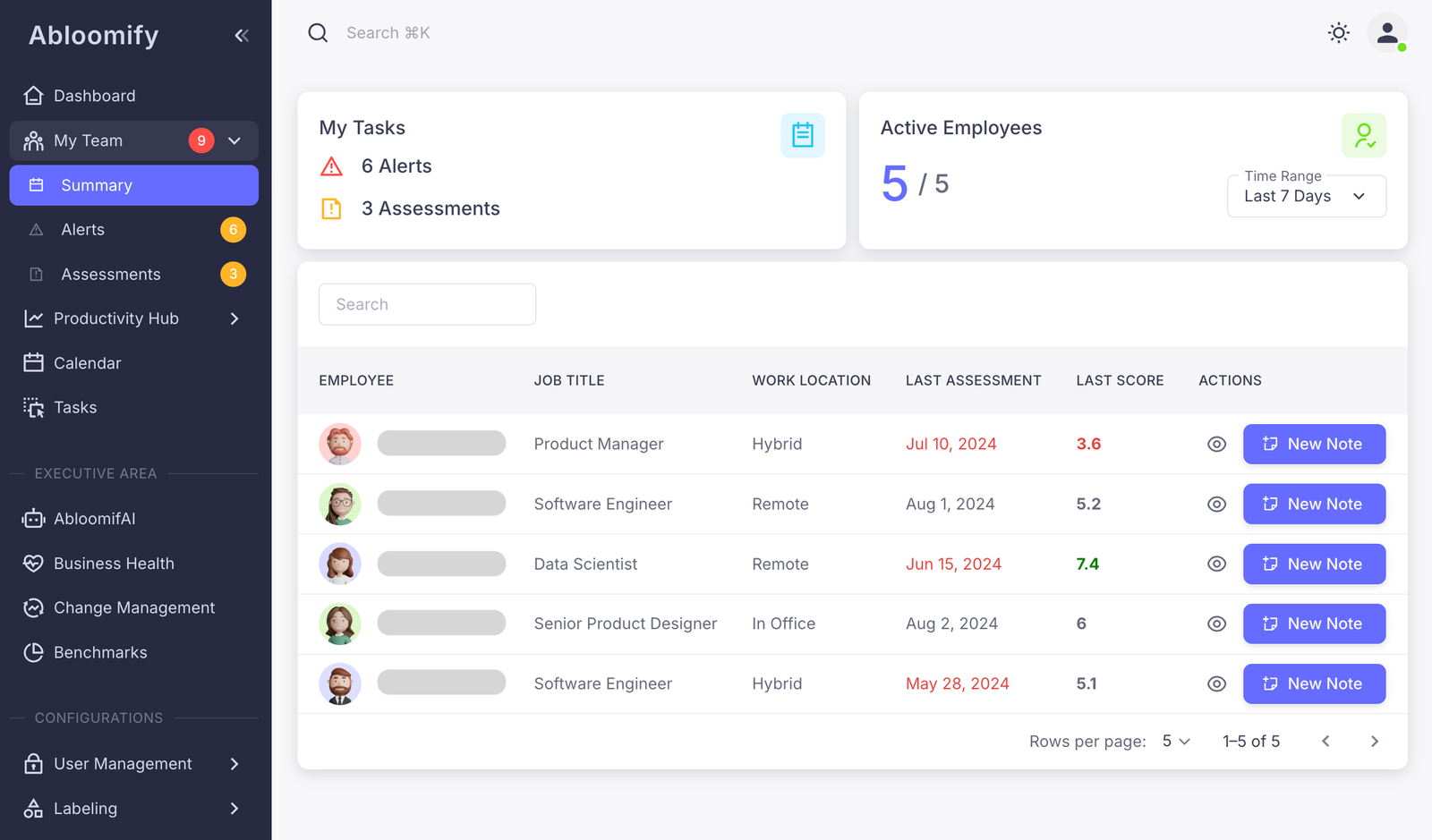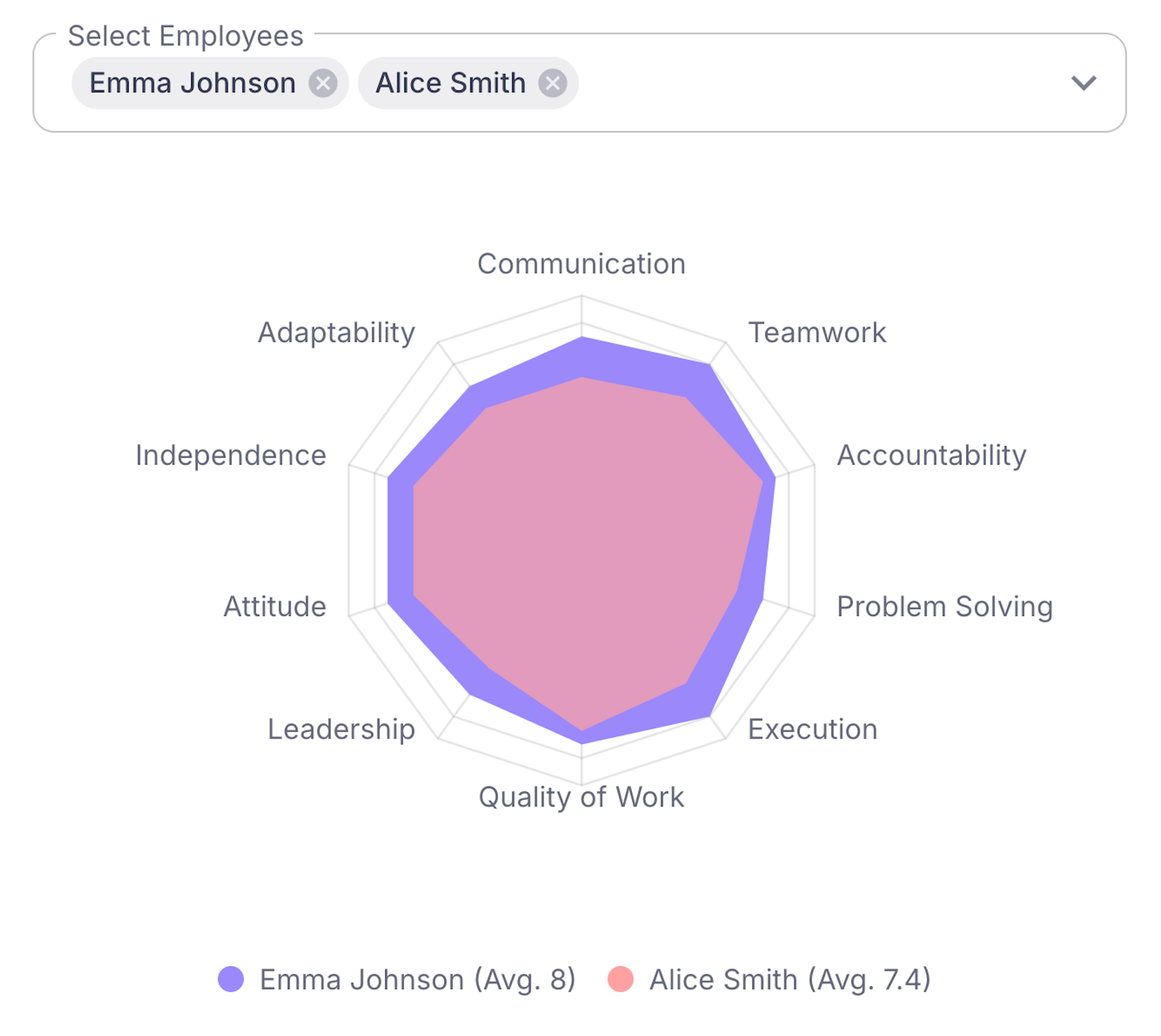Workforce analytics in tech involves leveraging data and AI to improve team performance, sustainability, and decision-making. Understanding these dynamics empowers leaders to foster resilient and high-performing teams.
The Role of Workforce Analytics in Technology
Workforce analytics has become a cornerstone in technology companies, transforming vast amounts of data into strategic gold. By harnessing this power, tech leaders can unveil patterns hidden in employee behaviors and performance metrics, propelling informed decision-making.
Actionable insights derived from analytics allow managers to navigate the complex landscape of team productivity and management. For instance, by analyzing data on project timelines and task completion rates, leaders can identify bottlenecks and improve efficiencies. This leads to a more streamlined and effective workforce.
Moreover, data plays a pivotal role in identifying trends and foreseeing risks. By continuously monitoring engagement levels and workload balance, tech managers can proactively address signs of burnout before they escalate. Industry titans like Google have already paved the way, employing analytics to refine their hiring processes and talent retention strategies.
Here are tangible benefits offered by workforce analytics:
- Enhanced decision-making by providing evidence-based insights.
- Increased productivity through identifying and resolving performance blockers.
- Better team management by recognizing and supporting individual strengths.
- Early identification of potential risks, enabling timely interventions.
Tech companies like Microsoft utilize analytics to not only track productivity but also to cultivate a culture of continuous improvement. By integrating analytics into strategic processes, these companies align their workforce with overarching business goals. Utilize resources like Workforce Analytics for AI-Driven Productivity Transformation to stay ahead in this transformative journey.
Leveraging AI Manager Copilot for Productivity
Imagine you’ve got an intelligent sidekick at your disposal, and not just any sidekick, but one designed specifically to enhance productivity and wellbeing at work. Enter Abloomify’s AI Manager Copilot, a tool crafted to aid tech leaders in creating dynamic, engaged teams. Here’s how it can transform the work environment:
- Productivity Alerts: Utilizing sophisticated AI algorithms, this copilot identifies potential risk zones of burnout by tracking key performance patterns. It keeps a watchful eye on workloads and sends timely alerts, allowing leaders to address issues before they spiral out of control.
- Automated Meeting Schedules: We know meetings are necessary, but managing them can steal valuable time. AI Manager Copilot uses data-driven intelligence to automate scheduling, ensuring essential meetings happen at optimal times without human intervention. This leaves tech teams with more freedom to focus on core projects.
- 360° Feedback Gathering: Traditional feedback mechanisms can be labor-intensive and limited. The AI copilot streamlines the feedback collection process, making it continuous and holistic. It amalgamates insights from peers, managers, and direct reports, presenting a comprehensive productivity map that tech leaders can decipher for growth.
These innovative features extend beyond mere convenience. They help leaders cultivate environments that prevent employee burnout and disengagement. By alleviating stressors and enhancing efficiency, productivity is not just maintained but bolstered, aligning workforce actions with strategic goals. To learn more about integrating AI for optimizing productivity in tech teams, explore this guide on workforce analytics for AI-driven productivity transformation.
Strategic Workforce Planning
Incorporating strategic workforce planning tools transforms tech teams’ ability to adapt to evolving needs. Abloomify offers a suite of solutions that enhance this process, focusing specifically on capacity planning, workload balancing, and succession planning. These tools empower tech teams by providing insights that foster adaptability and resilience.
Capacity planning ensures that tech teams can efficiently meet project demands by using data-driven insights. This approach minimizes resource over- or underutilization, thereby optimizing productivity. By understanding the current capacity needs, teams can allocate resources effectively and preemptively address demands without hindering performance.
Workload balancing is another key tool. It helps maintain equilibrium by distributing tasks according to team members’ skills and current workloads. This reduces burnout—a pressing concern for hybrid and remote teams—and enhances employee engagement by ensuring everyone is challenged appropriately yet not overwhelmed.
Succession planning secures tech teams’ future adaptability by identifying and nurturing potential leaders. With a clear understanding of skills and capabilities, planning for future vacancies aligns with organizational goals and mitigates disruptions from unexpected changes. This not only ensures a seamless transition but also fosters a culture of growth and development.
These strategies significantly bolster flexibility, particularly in hybrid and remote settings. By aligning workforce capabilities with organizational objectives, tech leaders achieve resilience and sustained productivity. For further insights, explore the comparison of workforce analytics with people analytics for enhanced business efficiency.
Performance Management and Career Development
Abloomify’s approach to performance management and career development provides a framework that is both standardized and adaptable. By using established assessment methods, it allows managers to evaluate team members objectively, ensuring equity across the board. The integration of AI-powered tools supports this process, offering personalized recommendations to help employees hone their skills.
Consider these key features:
- Standardized assessments ensure fair evaluations, promoting transparency and trust within teams.
- AI-driven insights suggest training and development opportunities tailored to individual employee needs.
- Continuous feedback mechanisms foster regular communication, paving the way for meaningful improvement.
Career development at Abloomify is particularly forward-thinking. Employees are offered career trajectory tools to visualize potential growth paths, aligning personal ambitions with organizational goals. This proactive planning fosters a culture of continuous learning and adaptability—critical components in a sector defined by rapid change.
Furthermore, the commitment to ongoing feedback loops ensures that team members receive timely insights into their performance. This empowers them to adjust and enhance their skills in near real-time. Consequently, tech teams remain agile, effectively navigating evolving challenges while maintaining peak productivity.
For HR leaders, these methodologies illustrate the transformative potential of strategic performance management. By harnessing the power of analytics, leaders can cultivate a future-ready workforce poised for innovation. For those looking to delve deeper into enhancing performance management, you can explore how to transform performance management strategies for 2025.
Optimizing Technology and Change Management
Navigating the complexities of tech and change management requires strategic use of enterprise workforce analytics. To optimize technology and manage change, organizations should consider several key approaches:
- Impact Measurement: Use workforce analytics to measure the effect of new processes. Tracking productivity, engagement, and satisfaction helps identify which changes enhance performance and which need adjustment.
- Reducing Software Spend: Analytics can illuminate underused software, offering opportunities to cut costs without impairing efficiency. Regularly review software utilization to ensure investments align with organizational needs.
- Adaptive Change Management: Utilize data to anticipate employee adaptation needs and tailor support accordingly. Analytics can reveal how different teams respond to changes, enabling tailored communication and training strategies.
Adapting to technological advancements and organizational changes should align with performance initiatives already in place, such as performance management frameworks. Maintaining a consistent level of workforce effectiveness involves avoiding overhauls that disrupt operations. Instead, implement incremental improvements based on data-driven insights.
When leveraging technology, also consider its implications for team dynamics and morale, as workforce analytics can signal changes in team collaboration levels. Proactively managing these factors helps maintain a seamless integration of new technologies without diminishing workforce performance.
This integration extends beyond just the implementation phase. Continuously monitoring the impact of technological updates ensures alignment with ongoing development and organizational objectives. By strategically balancing technological and organizational shifts, businesses can foster adaptability and resilience without sacrificing productivity.
Building a Culture of Trust with Privacy Design
Imagine trying to navigate a modern workplace where every click and keystroke is under surveillance. Employees would likely feel a level of discomfort, much like characters in a dystopian novel. For tech teams, where innovation thrives on autonomy and creativity, this sort of environment stifles progress.
Here’s the catch: workforce analytics can provide powerful insights without infringing on privacy. When analytics focus on aggregate data rather than invasive tracking, organizations can support their employees while maintaining confidentiality. By using privacy-first design principles, companies build a crucial foundation of trust.
Consider these benefits:
- Trust leads to higher employee engagement by encouraging transparent communication.
- Employees are more willing to share honest feedback, enhancing problem-solving and innovation.
- Retention rates improve as employees feel respected and valued, reducing turnover costs.
Privacy-first analytics create a positive workplace culture where individuals feel secure. A trust-filled environment empowers tech teams to take thoughtful risks and contribute fully. By contrast, lack of trust can result in disengagement, fostering an atmosphere of suspicion and fear.
Organizations seeking to enhance their workforce analytics should embrace tools that highlight these privacy principles. Investing in privacy-conscious solutions not only fosters trust but aligns with ethical workforce practices. For those ready to make this cultural shift, consider exploring workforce analytics strategies with support from platforms that prioritize ethics and innovation. Reach out to Abloomify’s contact page for guidance on creating a respectful, data-driven culture.
Final words
Enterprise workforce analytics empower tech leaders to make data-driven decisions for optimizing team performance and fostering growth. Tools offered by Abloomify provide valuable insights and support flexible, adaptable teams. For personalized solutions in workforce management, consider reaching out to Abloomify to leverage their AI-powered platform.



